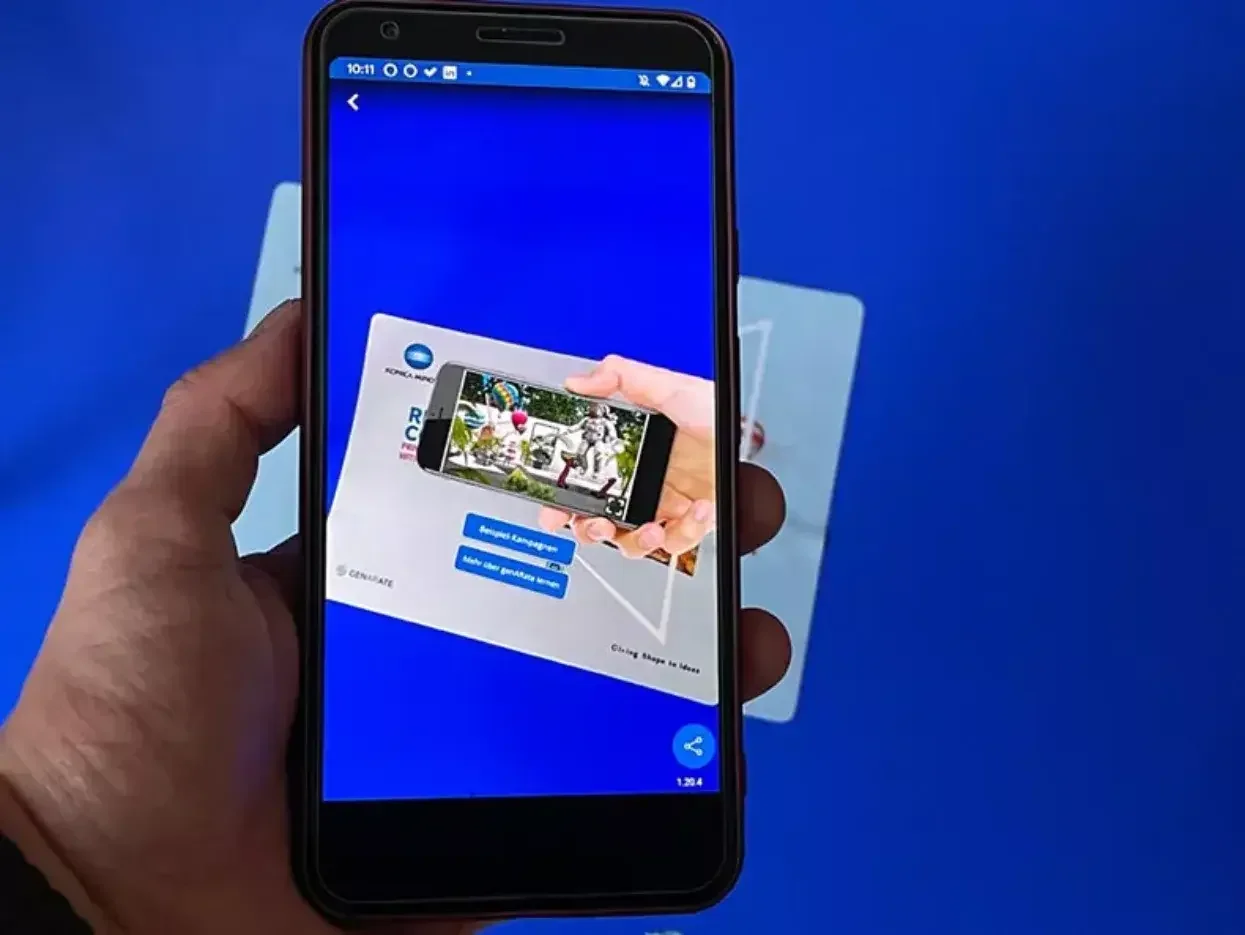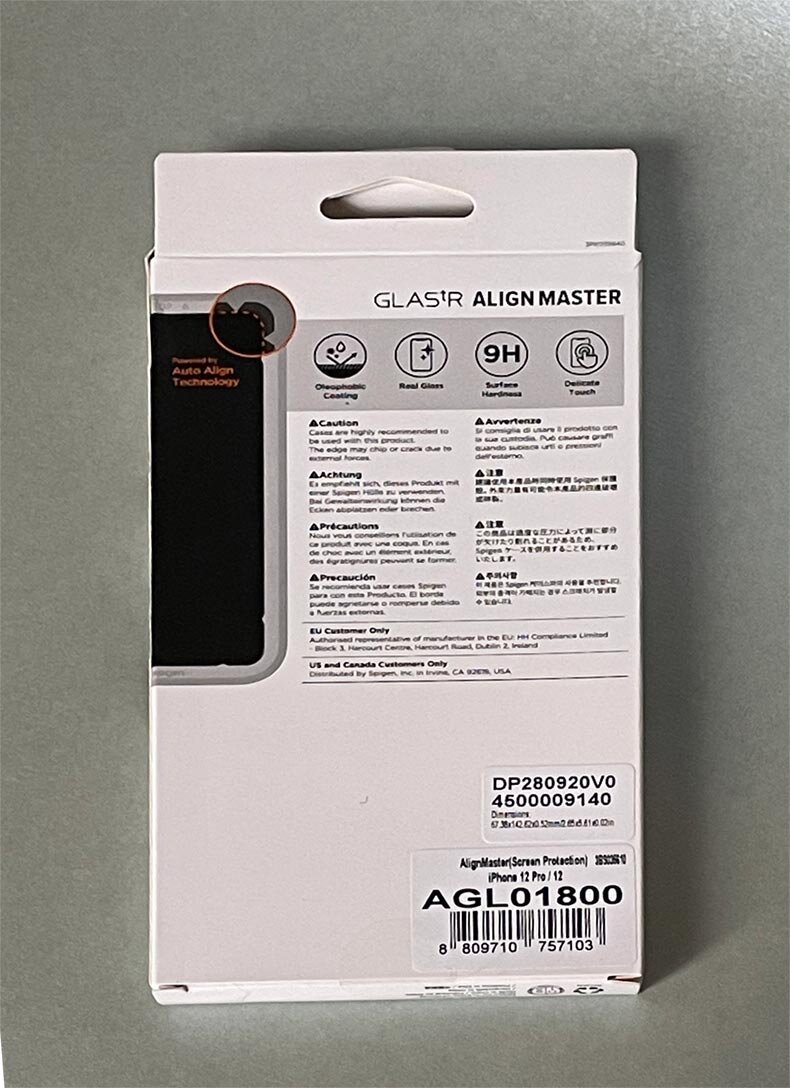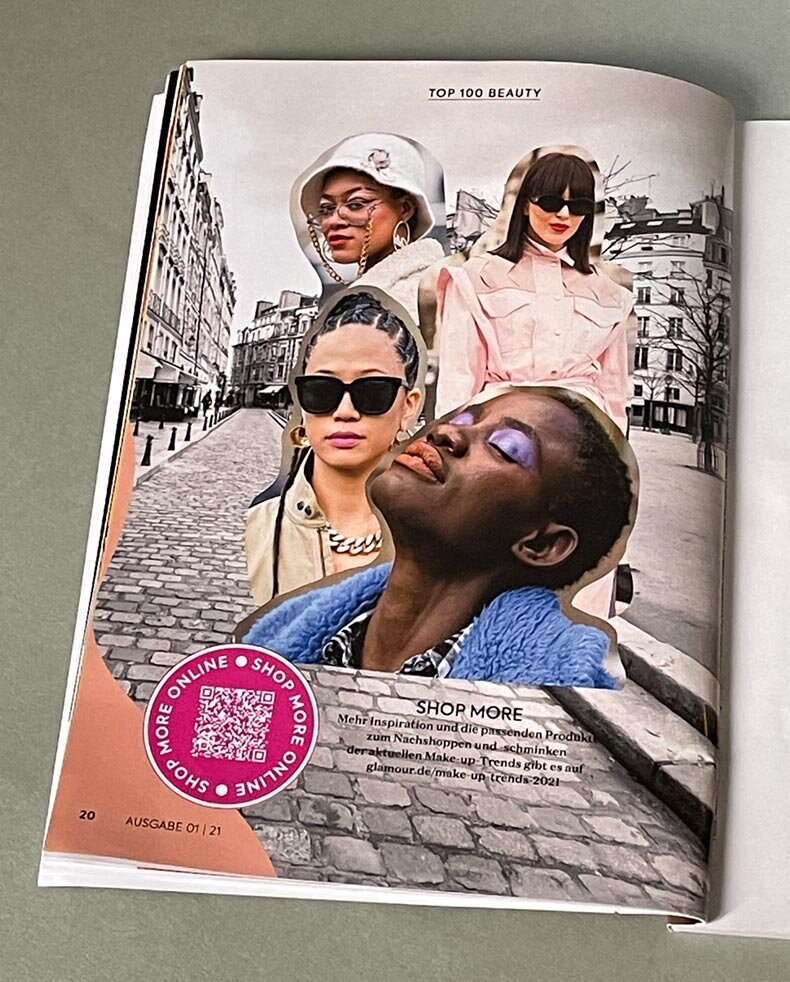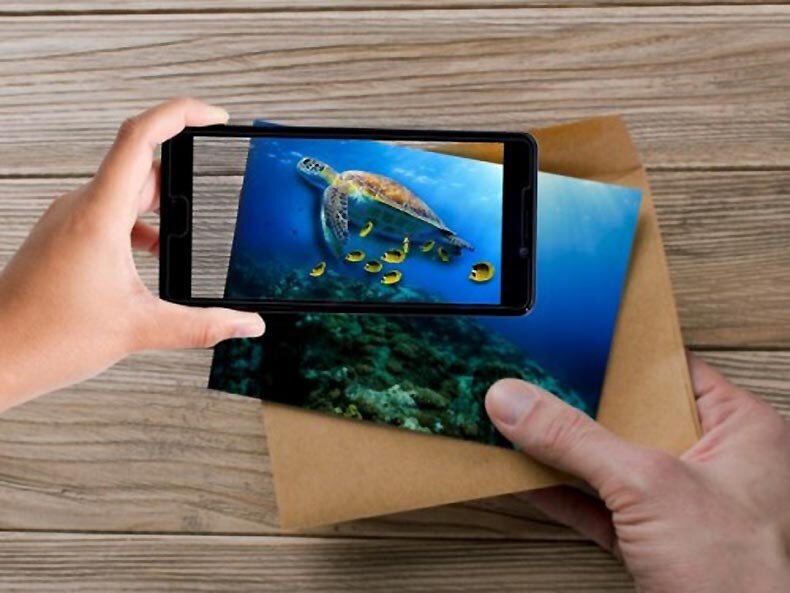
Print can be a gatekeeper for digital content, it is engaging and cost-effective. Linking interactive printed products to the internet is easier than ever, it is time for printers to communicate this message with brand owners.
Here is an example of a scenario: imagine spending thousands of pounds on an elaborate brand video. After a few weeks, it has only received 127 views and a few likes. Today, approximately every minute 500 minutes of videos are uploaded to YouTube every minute. There is a whole SEO business dedicated to improving the position of digital content in search engines and social media. So far, print has not yet been recognized a part of this particular industry. Which seems rather odd as interactive print offers a unique off-page way to drive target audiences to digital content. Printers in search of new business opportunities may want to look into this.
What is “interactive print”?
In a way, print has always been interactive. Glued-on postcards, product samples, promotional gifts or added stickers, all these items have been designed to elicit a reaction from the target group. Interactivity, first and foremost, means the implicit exchange of information. In today’s modern and digital age, a more IT-centric view on “interactivity” has been established, suggesting that interaction mainly occurs between human and computer or machine-to-machine.
Print has always been interactive for as long as most people care to remember. Barcodes have been around for decades, barcodes printed onto packaging ensures that the cashier does not need to remember the price of every single item in store. Barcodes also connects goods to IT and logistics networks that helps streamline supply chains.
What kinds of interactive print options are there?

CAPTION: Barcodes had been around for decades and have been probably the first technology to ever make print interactive. Image credit: S. Angerer
For the sake of clarity, this article will focus on interactive print designed to draw business to consumer and sometimes even business to business to digital content on the internet or social networks. There are several options:
- Barcodes and QR codes
- Social Media Codes (Pin Code, Nametag QR Code)
- Short links
- NFC
- Augmented Reality (AR).
Barcodes and QR codes

CAPTION: QR-Codes are frequently used in magazine ads to link print to interactive content. Image credit: S. Angerer
Barcodes are available in various standards, but the idea of a simple barcode for computer-to-computer information exchange has been around since 1950. The QR code was first invented in Japan and is considered a “2-dimensiononal” barcode. This format is mainly used with mobile phone cameras. Many of today´s smartphones recognize QR codes without the user installing a dedicated app to do so.
A QR code usually opens a link to a website or social media account. Free QR code generators are able to encode copy, V-cards, Wifi Log-ons, MP3s and PDFs. Printing a barcode or QR code is very easy, as they are designed to work even when (slightly) damaged. In the packaging print industry, dedicated bar code verifier handhelds are available to ensure a barcode works as intended.
Social Media Codes

CAPTION: QR-Code for Instagram Profile, created within the App. Image credit: S. Angerer
With a QR-Code it is easy to link a print application to a social media profile or ask for a “Like”. Instagram even lets you design a QR-Code within the app. If someone scans this QR-Code, it opens the maker´s account in Instagram, if the app is installed on the mobile phone or tablet.
Pinterest Pincodes have the same function, they direct the visitor to a website or social media account as well as a Pinterest board. Although, this only works if it is a business account. However, the circular Pinterest Pincode is quite easy to print. The interactive content for the print is also readily available in the social network profile it links to.
Short Links
To link a print application to an online resource, it is best to use a short url. There are several free URL shortener services around (Bit.ly the most common) to swap a long web address for a short url. However, you can still copy the original url from a print into a browser, desktop or mobile, with ease.
NFC
Near field communications are frequent in the finance and logistics industries. Essentially, the tiny circuits can be laminated onto many print products. If read with an NFC-enables phone (most are today), they can take the user to videos, websites or downloads.
Augmented Reality (AR)

CAPTION: Konica Minolta genARate SAS offers PSPS an “out of the box” platform to create interactive prints with beautiful AR experiences. Image credit: Konica Minolta.
Augmented Reality is an “extension” to the reality seen through a camera lens, most frequently with a mobile device like a smartphone or tablet. The process is quite complicated, as an AR activated picture requires mapping of location and 3D data. The initial idea was first explored in the early 2000s. But the capability required in the devices to ensure a seamless experience has only been available for a few years. This is the reason why AR has remained a relatively niche application outside the gaming industry.
Lego was an early adopter. The toy company has been using POS kiosks in flagship stores to create AR experiences when a box of building blocks was presented at the kiosk´s scanner in 2010. Today, their “Hidden Side” app offers multi-player AR gaming with certain Lego boxes.
In the early years of AR, printed pictures needed markers to work with AR content this is now not required. Therefore, any quality print on paper, cardboard or other substrates can trigger an AR experience. This is dependent on having the right app installed on the mobile device and ensuring the AR content has been developed and linked with the printed picture.
How do I create an AR experience for a printed product?
Printers have plenty of experience regarding creating digital data. But their expertise usually covers pre-press first and foremost. A customer who wants an AR experience included with their printed product, will most probably be looking for a turn-key solution, including print and AR.
This is when the Konica Minolta genARate solution comes in the picture. Developed as a SaS (Software as a Service) platform, it includes all the tools printers need to print and produce an AR experience. The interactive part is created in a web browser portal, so no expensive and complicated additional software is required. A free App for Android and iOS devices end consumers need to view the AR experience is also part of the platform, as well as tools to analyse user behaviour and metrics. There is even a free 30 day trial available.
There are other options to create AR experiences, including developer resources directly from Google as well as Apple. These mainly target experienced 3D creators, which makes it harder for newcomers.
Is Interactive Print a Path into the Future of Printing?
As COVID-19 continues, many people have accepted that things will not go back to “normal” per se. This is particularly true for the hospitality and retail industries, but also for other business sectors. Even consumers with little knowledge of technology have become experienced online shoppers and video conference users in in last few months, and many enjoy it. Hybrid shopping (online and in stores) has made even bigger progress that anticipated.
This change in consumer behaviour will change high street shops and malls for years to come. It will also create a growing demand to connect the physical and the digital world to entice hybrid customers with a unique shopping experience. Printers that look into the various ways to make print more interactive will therefore be able to position themselves as their customers unique technology partners, securing their print volumes and margins in return.